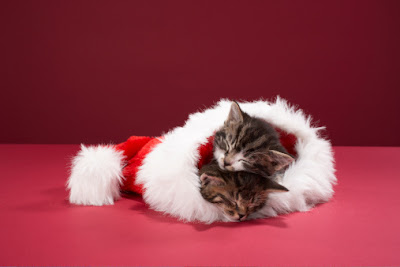The team at the Animal Hospital of Nashua knows how hard it can be to get your pet to sit still for some grooming, but here are some helpful tips that we hope will work for you! As always, please contact us if you have any questions or concerns, and we'll be glad to help!
Groom
Your Cat
Your feline will look (and feel!) like the cat’s meow after a good grooming
session. By nature, cats are extremely fastidious. You’ve no doubt watched your kitty washing herself several times a day. For the most part she can take care of herself very well, thank you, but sometimes she’ll need a little help from you.
Make Grooming as Enjoyable as Possible—For the Both of You!
Grooming sessions should be fun for the both of you, so be sure to schedule them when your cat’s relaxed, perhaps after exercise or eating. You want your pet to remember grooming sessions in a positive way, so you never want to risk losing your temper. If you’ve had a stressful day or are in a bad mood, it’s probably not a good time to groom your cat.Keep your first grooming sessions short—just 5 to 10 minutes. Gradually lengthen the time until your pet is used to the routine. You should also get your pet used to being handled. Get in the habit of petting every single part of your cat—including ears, tail, belly and back—and especially the feet!
And keep in mind, a little patience can go a long way. If your cat is extremely stressed out, cut the session short and try again when she’s calmer. Unfortunately, most cats do not like baths, so you may need another person to help. And remember to pile on the praise and offer her a treat when the session is over.
Brushing
If your cat has short hair, you only need to brush once a week:
- First, use a metal comb and work through her fur from head to tail.
- Next, use a bristle or rubber brush to remove dead and loose hair.
- Be extra-gentle near her chest and belly.
If your cat has long hair, you will need to brush every day:
- Start by combing her belly and legs; be sure to untangle any knots.
- Next, brush her fur in an upward motion with a bristle or rubber brush.
- To brush her tail, make a part down the middle and brush the fur out on either side.
Bathing
- First, give your pet a good brushing to remove all dead hair and mats.
- Place a rubber bath mat in a sink or tub to provide secure footing.
- Put your cat in a tub or sink that has been filled with about 3 to 4 inches of lukewarm water.
- Use a spray hose to thoroughly wet your pet, taking care not to spray directly in her ears, eyes or nose. If you don’t have a spray hose, a large plastic pitcher or unbreakable cup will do.
- Gently massage in shampoo, working from head to tail.
- Thoroughly rinse with a spray hose or pitcher; again, avoid the ears, eyes and nose
- Dry your pet with a large towel.
Nail Clipping
- Begin by applying gentle pressure to the top of the foot and cushiony pad underneath—this will cause her to extend her claws.
- Use sharp, high-quality cat nail scissors to cut off the white tip of each nail, just before the point where it begins to curl.
- Take care to avoid the quick, a vein that runs into the nail. This pink area can be seen through the nail.
- If you do accidentally cut into this pink area, it may bleed, in which case you can apply some styptic powder to stop the bleeding.






